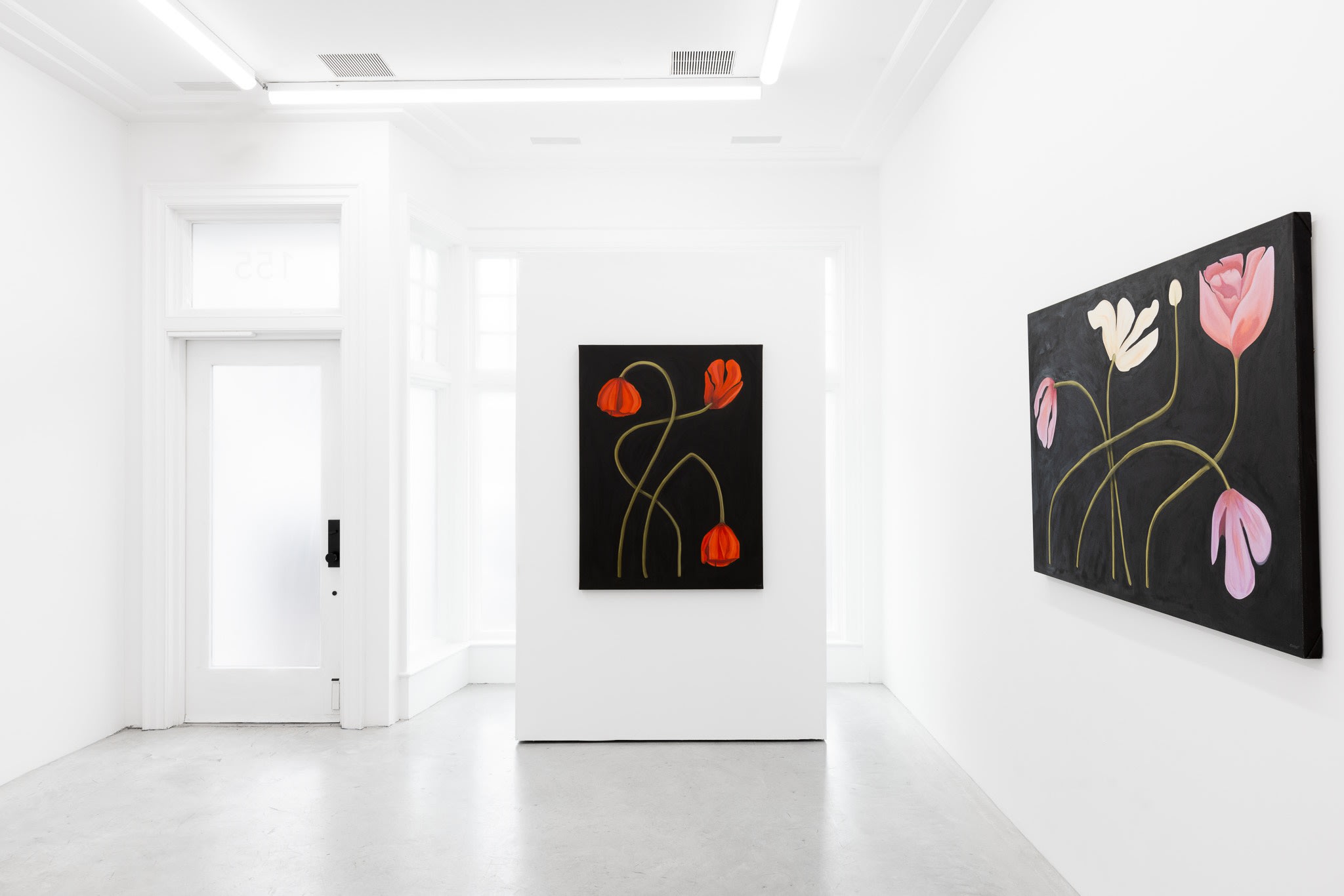Benjamin Ewing is a multidisciplinary artist based in Portland, Oregon. With a foundation in editorial photography and print design, his transition into painting and sculpture marks a deepening inquiry into visual language across mediums. Ewing’s practice centers on the relationship between material and meaning, allowing each form to inform and evolve from the last. His work is driven by a sustained exploration of how objects can communicate, inviting a broader reflection on perception, expression, and the human experience.
We had the pleasure of connecting with Ewing to delve into his artistic practice and the inspirations that shaped his latest work featured in the gallery’s summer group exhibition, Natural Recall.

Benjamin Ewing
A+W: What drives your work at its core—emotion, concept, aesthetic, social commentary, something else?
EWING: My core motivation comes from a deep personal need to create, it’s borderline compulsory. Without it, I can’t think clearly, it’s how I deal with things. Which has been extremely liberating for me, knowing that I’ll always have my practice no matter what. All of those motivations naturally come into play if I’m being honest enough with myself and my practice.
Repose, 2025
A+W: Your background spans photography, print design, sculpture, and painting. How does this multidisciplinary foundation inform the way you approach a work?
EWING: I’m a big advocate of compounding skillsets, letting each one build upon the next. The foundation of photography and design provided me with a clear understanding of composition, visual hierarchy, subject matter, light, color theory and what it takes to communicate an idea effectively. I’m trying to scale my understanding across multiple disciplines and will continue to fold more into my practice, with the goal of tackling larger and more complex disciplines. I think at the root of it, it’s more about having a desire to learn new things than it really is about the specific discipline itself.
A+W: Your work engages with painting and sculpture. Do the materials shape the message, or does the message dictate the medium? Do you work more from intuition or intention?
EWING: The answer is always both but it often shifts it’s emphasis from piece to piece. My approach to photography and sculpture is very similar. They’re very intuitive, in the moment, with little forgiveness and often have a primary subject. You really have to honor the subject for what it’s capable of expressing, a lot of listening and celebrating.
For painting and design, they lend themselves more towards the analytical for me. Figuring out how to fit the information you want into a single frame, problem solving, deciding where you want people to look first, it’s much more methodical. Both modes itch different parts of my brain so I enjoy floating between them.
"as a kid I’d dig through my grandparents magazine collection and was always really interested in these scientific and archeological records you’d find in old Nat Geo’s, you know...an image of an artifact on a black background with a scale ruler." -EWING
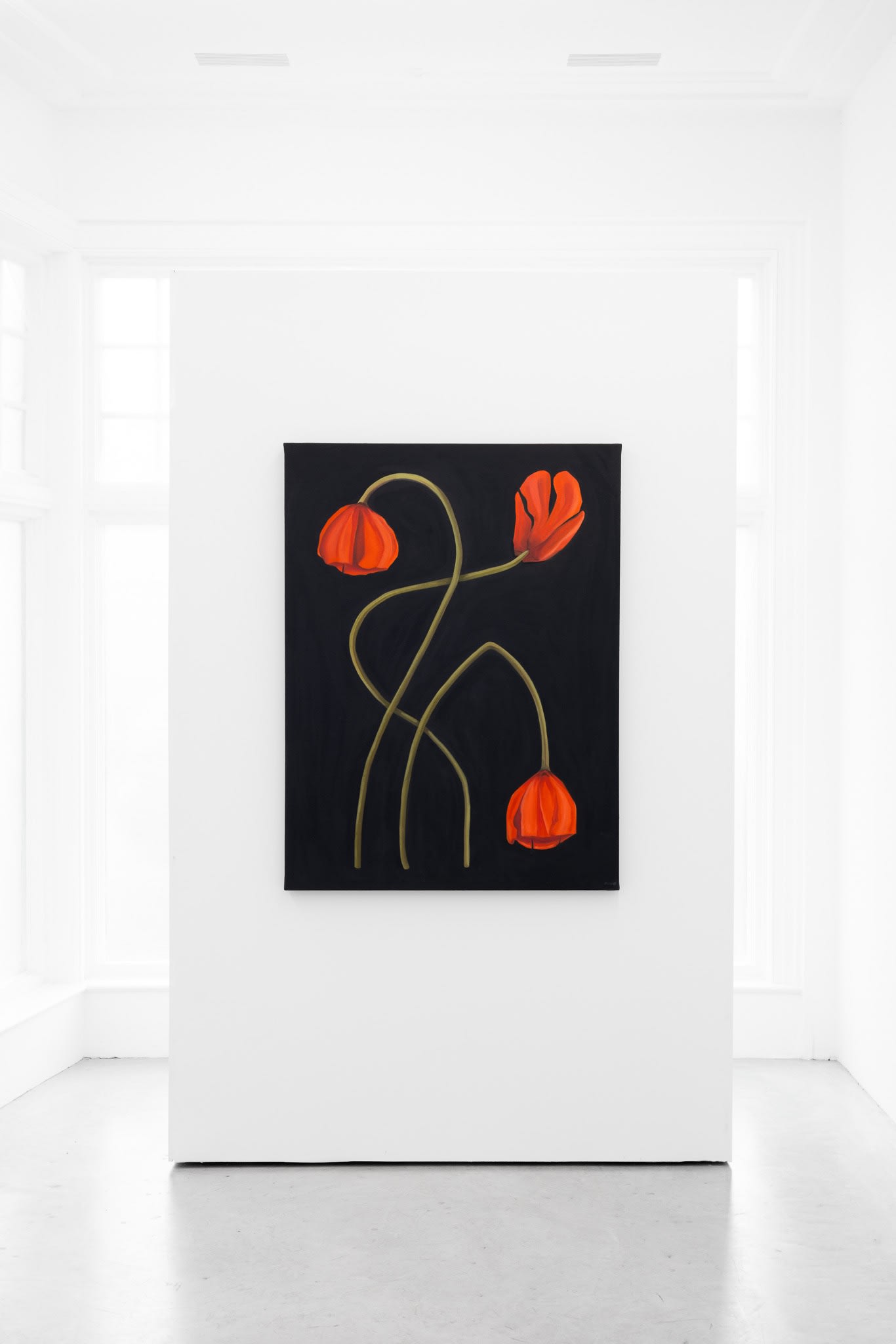
Coronaria, 2025
A+W:
What’s something about your work that most viewers might miss at first glance?
EWING: I think a lot of people view my work (especially my earlier work) and think it’s too simple, too easy... or that anyone could do it and they often miss the hours of planning, dozens of sketches and iterations it took to boil it down to it’s simplest form. That being said, if they’ve missed it that means I’ve done my job.
A+W: Do you prefer your work to be interpreted freely, or do you embed specific meanings you hope the viewer will uncover?
EWING: I much prefer people interpret it as they see it, explaining my intent out the gate cheats both parties from potential insights. I loathe exhibition introductions, please walk through before you read it. I will sometimes leave hints of my interpretation in the titles of the work but often don’t have a clear idea of what it means as I’m making it. That’s usually why I’m making it in the first place, to try and figure it out. This creates a much more open dialogue when talking to others about my work, it allows me to remove myself as the maker and we get to discover and celebrate these revelations together.
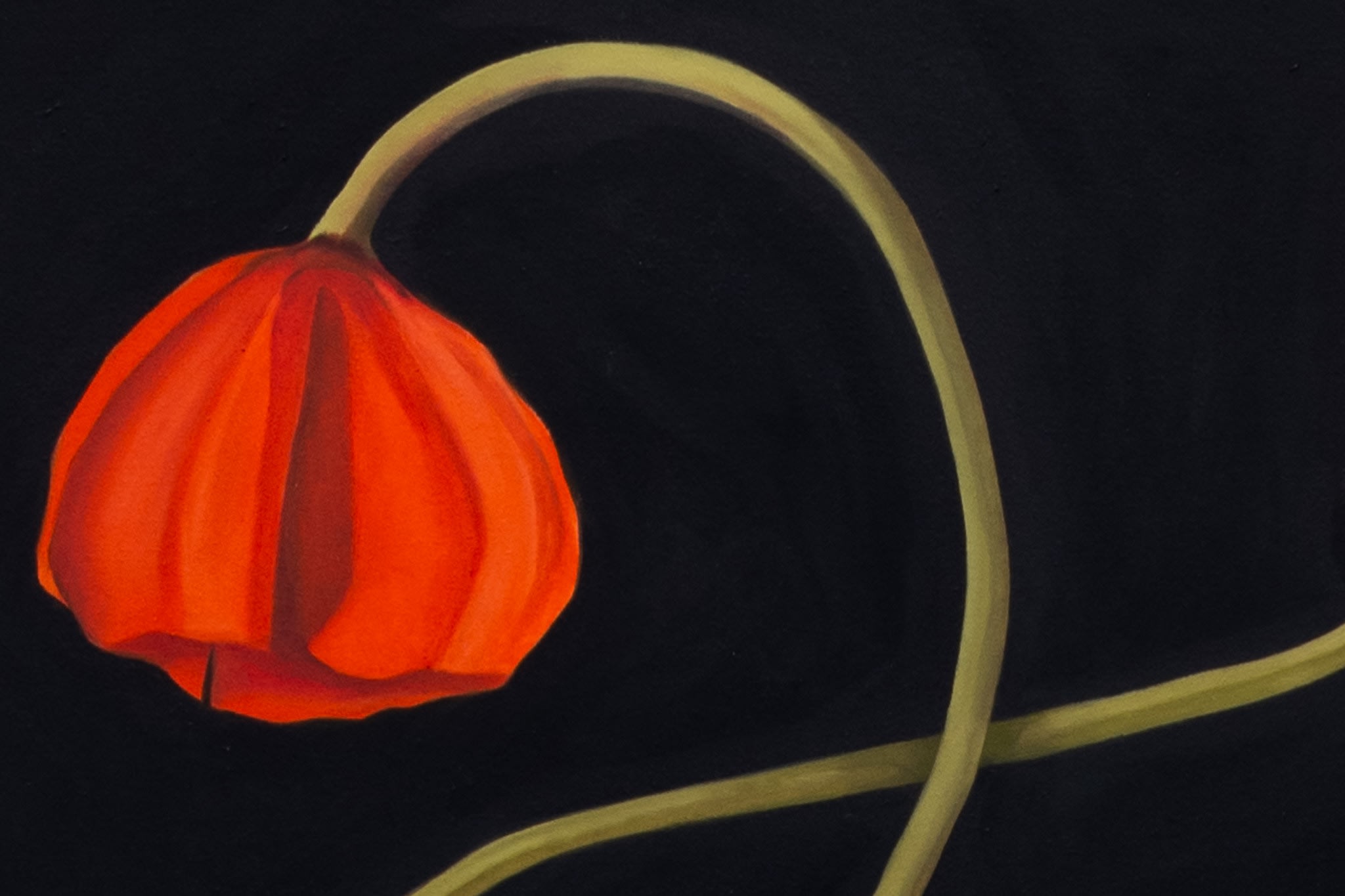
Detail of Coronaria, 2025
A+W: There’s been a clear progression in your work—from abstraction to recognizable figures and, more recently, to florals. What triggered those shifts in subject matter?
EWING: In my early work, it was very important to me that I exhausted my understanding of form, composition and balance. Much like compounding various disciplines, I’m intentionally compounding my skills within painting. I am entirely self taught, so this shift in subject matter was a necessary next step in developing my rendering skills and a path to creating more complex imagery. I felt like I needed to prove to myself that I could paint at a certain technical level so that I’d have a broader spectrum to play in. My early figurative work was very stark and “wrong” so to speak. I’m a believer in painting your way first and painting the “right way” later, because you can’t get that naivety back once you’ve learned the traditional method.
"The flowers came about because I really just wanted to see what it felt like to sit underneath a six foot flower." -EWING
A+W: How do you see your earlier abstract pieces in conversation with your more representational work now? Are they part of the same narrative, or do they feel like distinct chapters?
EWING: I think they’re rooted in the same principles but it’s tough to say. I recently pulled several paintings out of storage into the studio that spanned the last eight years or so and something really interesting happened where these works painted years apart and in completely different styles all ended up making a lot of sense together, almost more sense collectively than in their own silos. You could tell I was pulling at the same thread in all of them, so that narrative might just not be fully realized yet. It’s certainly becoming a world of it’s own.
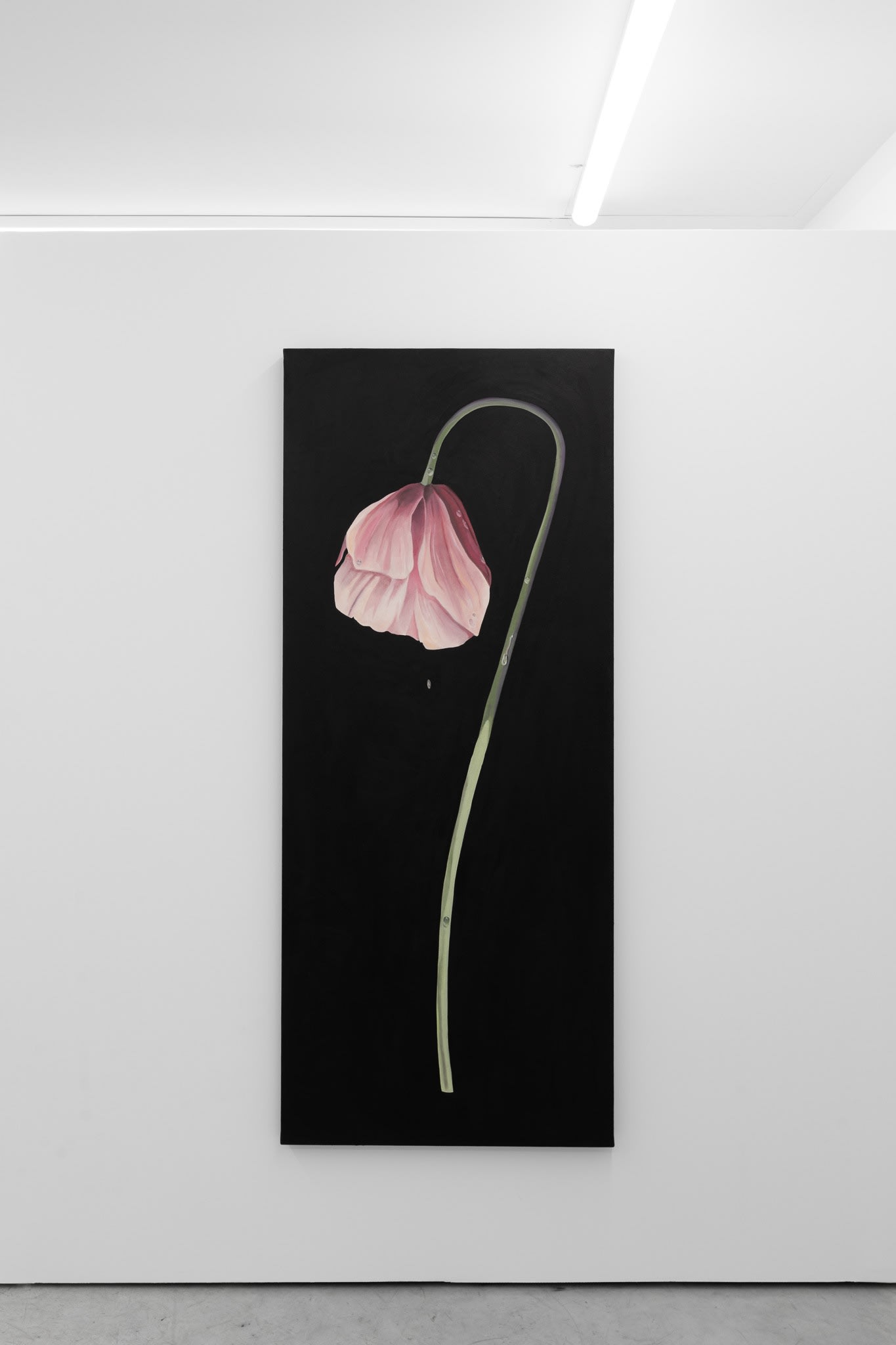 Wept, 2023
Wept, 2023
A+W: Your floral works carry a distinct energy—tender yet unruly—and feel like a meaningful shift from your earlier focus on line and figure. In what ways does this progression reflect something more personal or internal, and what do flowers allow you to express that other forms have not?
EWING: I think the shift in subject matter is two fold, partially a need for me to push myself creatively and technically but also from a desire to play with something new, to learn it’s limitations and see what I can say with it. The flowers came about because I really just wanted to see what it felt like to sit underneath a six foot flower, I was feeling a great sadness when I painted ‘Wept’ in December of 2023 (The first of my floral pieces) I think I painted it out of a need to feel something positive and it simultaneously provided a focal point for me to express that sadness.
Most shifts occur out of necessity, when I’m lacking something and/or desperately needing to dedicate time in my schedule to really consider something, that’s when I paint about it. The process let’s me work through it and the end result is a clearer mind and a finished painting. Win win.
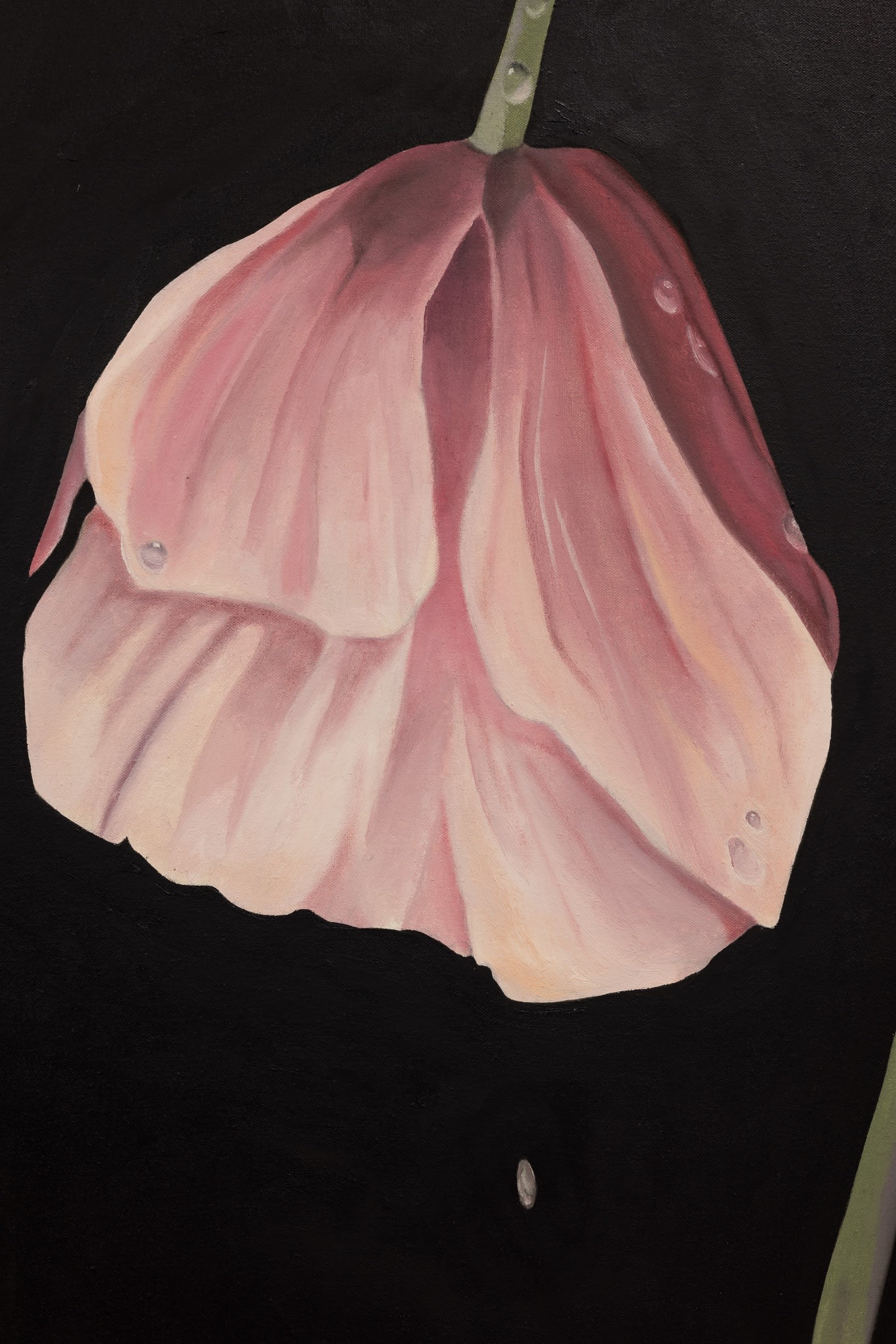
detail of Wept 2023
A+W: The florals in this latest series and exhibition emerge from deep black grounds—almost like apparitions. Can you speak to your decision to use such stark contrast and what it evokes for you?
EWING: I’ve always been obsessed with motifs like this, as a kid I’d dig through my grandparents magazine collection and was always really interested in these scientific and archeological records you’d find in old Nat Geo’s, you know... it would be an image of an artifact on a black background with a scale ruler in the corner. There’s something about it that feels really strong to me, removing an object from it’s environment and letting it be studied for what it is independent of anything else.
Installation image
A+W: Nature, in Natural Recall, is positioned as more than subject—it’s described as a generative force. How does this framing resonate with your own relationship to the natural world?
EWING: Nature is doing at all times what we as artists; are attempting to achieve, however earnestly. I have a deep reverence for nature and what it has to offer if we’re willing to slow down enough to listen to it, it’s incredibly sacred to me.
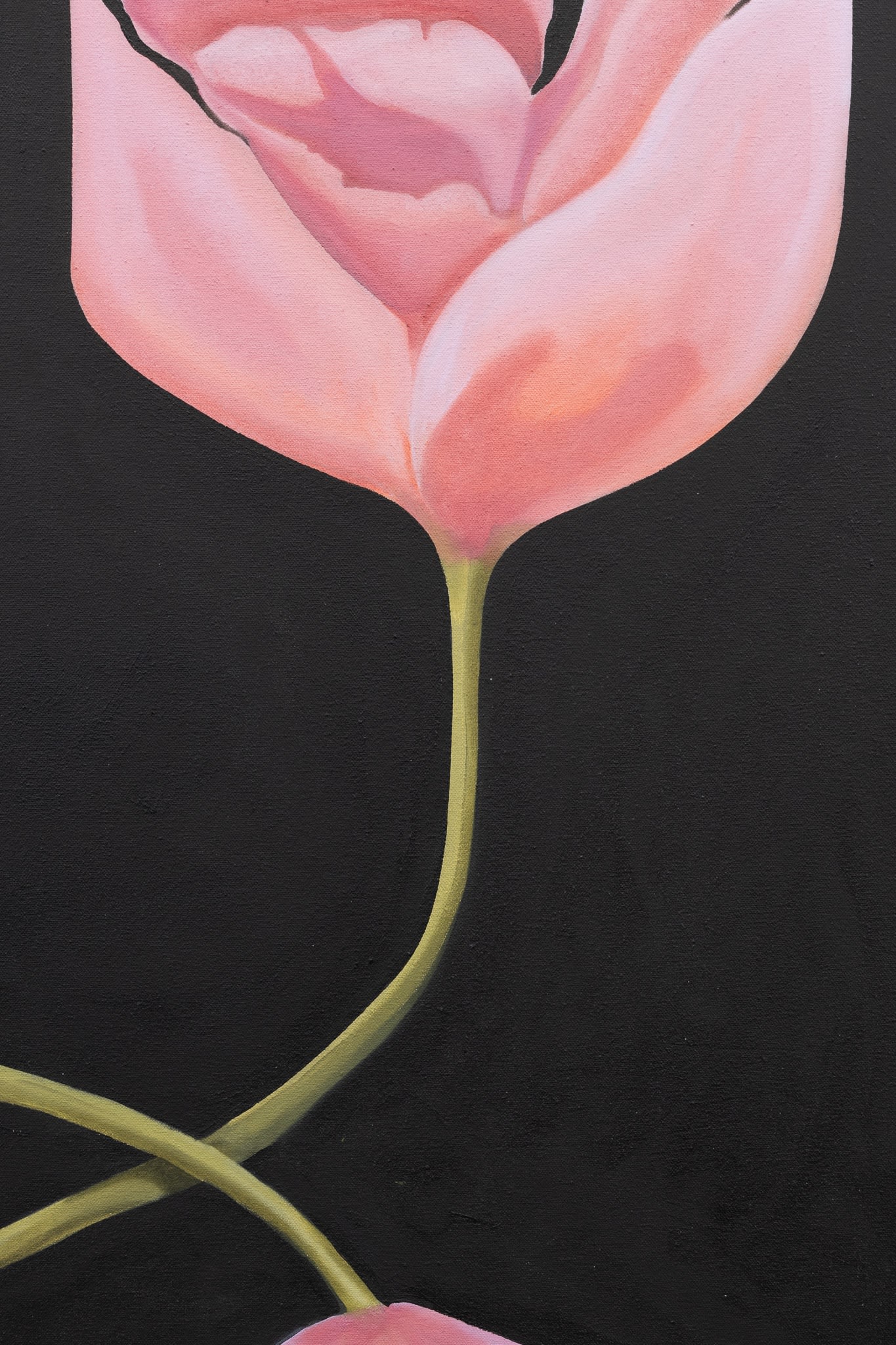
detail of Repose, 2025
A+W: Your practice often explores the expressive potential of objects. What does the flower, as a motif, unlock for you in this pursuit?
EWING: I think it’s an approachable point for people that feels familiar, I’m interested in the significance of flowers being used as symbols throughout history, especially their use in still-life renaissance paintings. They offer such a wide spectrum of emotional personification that grants me a lot of freedom, as well as powerful symbolism that can be tied to specific places, people and memories.
A+W: There’s a quiet sense of decay and emergence in these works. Were you thinking about cycles—of life, of memory, of nature—while creating them?
EWING: Certainly, I really enjoy keeping flowers far past their expiration date in my home, observing them at their various stages of life and death. A dying tulip is unbelievably beautiful to me, almost more so than when it’s in full bloom. I’m interested in their pigments, how they shift and how they’re capable of maintaining their vivid hues well after death. I think there’s a lot of parallels there that will allow people to really connect with them.
"I’m interested in the significance of flowers being used as symbols throughout history, especially their use in still-life renaissance paintings." -EWING

Eve, 2025
Bejamin Ewing's work is featured in a group exhibition at the gallery, NATURAL RECALL, running until August 16, 2025.
For more information on available works by the artist, contact gallery@ardenandwhitegallery.com
August 7, 2025




 Wept, 2023
Wept, 2023
